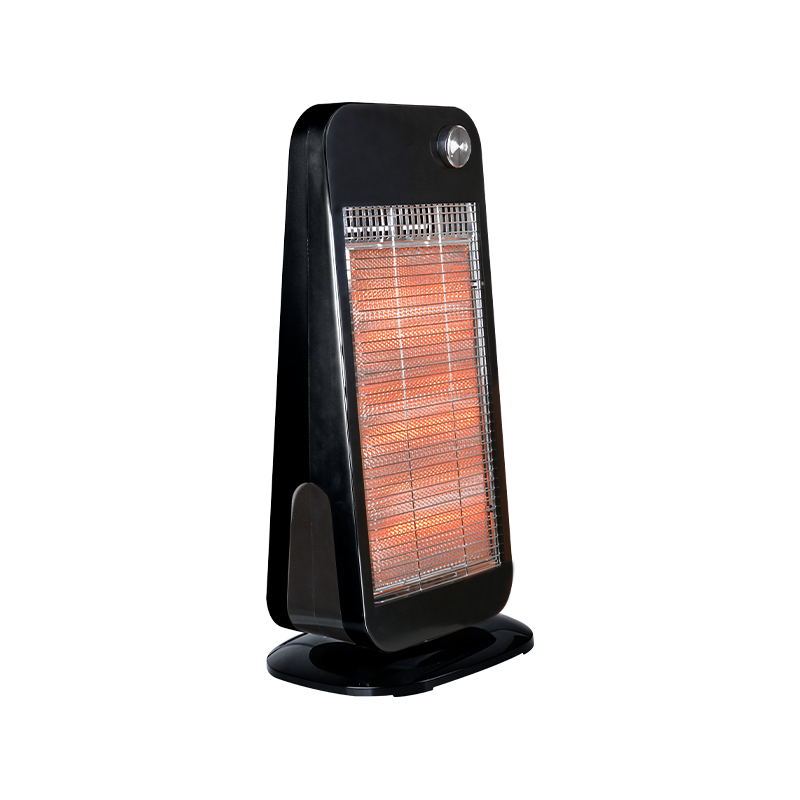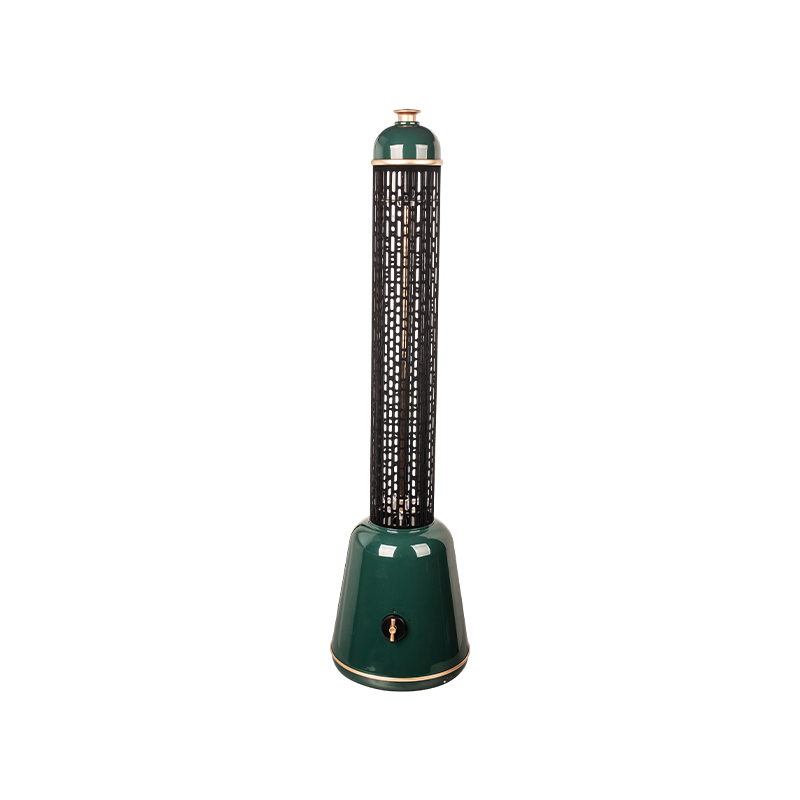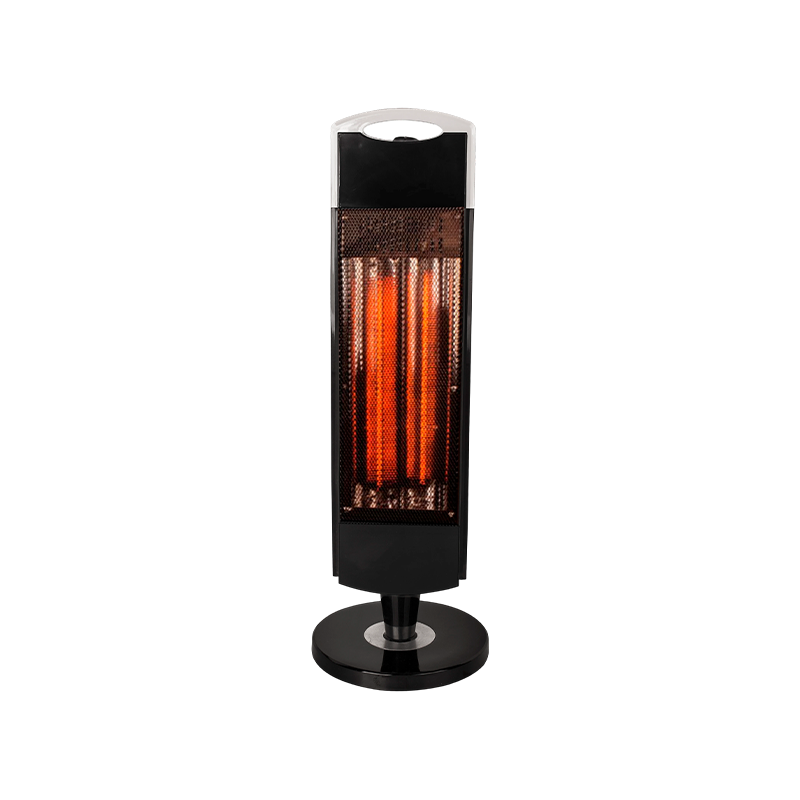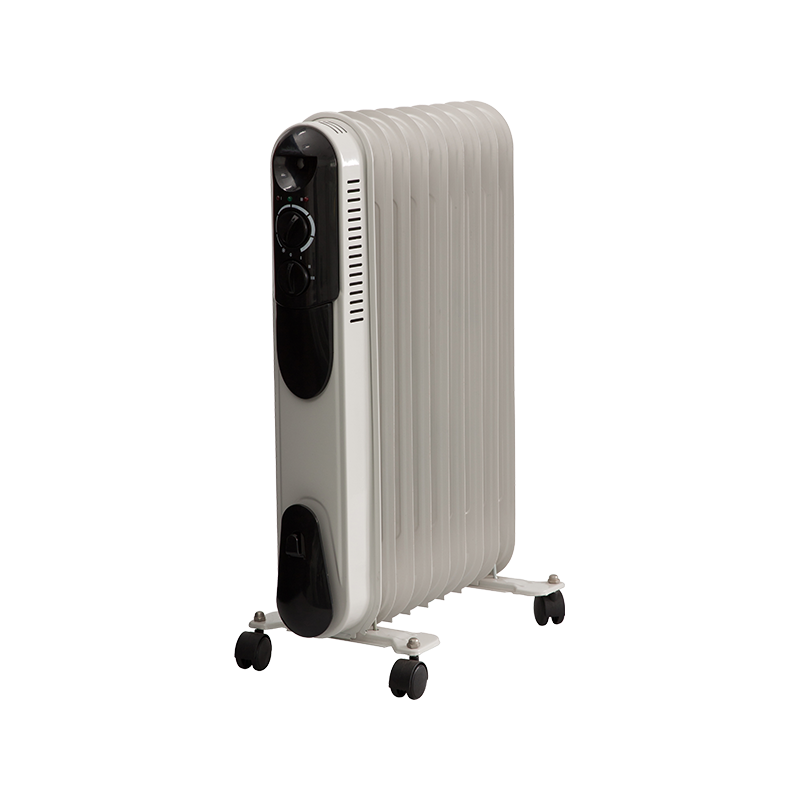Introduction to Portable Industrial Air Coolers As temperatures rise, keeping large spaces cool and ...
READ MORE
water dispensers, electric fans, air coolers and tea bar machines, and has become a trusted brand in the industry.
Is the Fan Heater the Ultimate Solution? A Guide to Types, Benefits, and Buying Tips
1. Exploring Fan Heaters: Efficient Heating Solutions
The Basic Definition and Working Principle of Fan Heaters
Fan Heaters are a widely popular solution for localized space heating, combining two core components: a Heating Element and a Fan. This design makes them an efficient, portable, and fast way to provide warmth.
The core operating principle of Fan Heaters is the combination of Convection Heating and Forced Air.
- Heating Phase: When an electric current passes through the heating element (typically a metal coil or ceramic plate), the element rapidly heats up.
- Air Intake Phase: A fan, usually located at the back of the unit, draws in the surrounding cool air.
- Convection Phase: The cool air rapidly increases in temperature as it flows over the hot heating element.
- Forced Output: The fan forcibly blows the heated air out of the unit, quickly circulating it into the target space, thereby achieving rapid heating of the localized area.
This mechanism is different from traditional radiant heaters (like oil-filled radiators). While radiant heaters primarily heat surfaces and objects using infrared radiation, Fan Heaters mainly heat the air, and use the fan to quickly spread the warmth, ensuring their superior Quick Heating capability.
The Market Position of Fan Heaters: Why They Are Growing in Popularity
In modern home and office environments, Fan Heaters are no longer just a supplement to traditional heating systems; they are becoming a mainstream option for localized heating due to their distinct advantages:
- Targeted Heating: Without needing to turn on a central heating system for the entire house, Fan Heaters can quickly concentrate heat in the user's immediate area, such as a room, under a desk, or near a bed, avoiding energy waste and lowering heating costs.
- Portability and Flexibility: Most Fan Heaters are compact, lightweight, and equipped with a handle, allowing users to easily move them from one room to another. This portability makes them ideal for renters, students, and those who frequently change their work environment.
- Low Initial Cost: Compared to installing a central heating system or purchasing large, fixed heating units, the initial investment for Fan Heaters is typically very economical and accessible.
Overview of Core Fan Heaters Benefits
| Core Benefit | Description | Key Influencing Factors |
| Quick Heating | Uses forced air and direct air heating principles to significantly raise the temperature in a small area within minutes. | Heating element type, fan power. |
| Excellent Portability | Small size, lightweight, often includes a handle for easy movement and deployment between different rooms. | Device size and dimensions, weight. |
| Flexible Placement | Only requires a standard electrical outlet to operate; can be placed on a desk, floor, or in a corner without space constraints. | Power cord length, presence of tip-over protection. |
| Low Initial Cost | The upfront investment for purchasing Fan Heaters is lower compared to permanent heating systems. | Heater type (metal coil is often the cheapest). |
2. In-Depth Analysis of Different Fan Heaters Types
Ceramic Fan Heaters
Fan Heaters Working Mechanism: Ceramic Fan Heaters use PTC (Positive Temperature Coefficient) ceramic plates as the heating element. When current passes through these ceramic plates, they heat up quickly. Unlike traditional resistance wires, PTC material has a self-limiting temperature characteristic—when the temperature reaches a predetermined threshold, its resistance sharply increases, thus limiting the current flow and achieving a self-regulating temperature effect. The fan blows air over these plates to deliver warm air.
| Advantage Analysis | Description |
| High Energy Efficiency | The self-regulating nature of PTC material means it only uses maximum power when necessary. Once the room reaches the set temperature, it reduces power consumption, making it more energy efficient. |
| Enhanced Safety | Ceramic elements do not reach extremely high temperatures, and their self-limiting characteristic reduces the risk of overheating and fire, making it a safer heating method. |
| Stable Heat Output | Capable of providing a continuous, steady flow of warmth, rather than intermittent hot and cold bursts. |
Recommended Use Cases:
- Small to medium-sized rooms (e.g., 10-20 square meters bedrooms or study rooms).
- Personal office spaces, placed under a desk or on a desktop.
- Households with higher safety requirements (e.g., with children or pets).
Metal Coil Fan Heaters
Fan Heaters Working Mechanism: These types of Fan Heaters use a high-resistance alloy metal coil (or resistance wire), which may be exposed or encased in insulation, as the heating element. Current passing through the coil generates heat, warming the air around the coil, and the fan then forces the air out.
| Advantage Analysis | Description |
| Very Fast Heating | The metal coil heats up quickly to very high temperatures, providing immediate heat output. |
| Simple Structure | The manufacturing process is mature, the structure is relatively simple, and the failure rate is low. |
| Affordability | Usually the most economically priced type of Fan Heaters on the market. |
Recommended Use Cases:
- Garages, tool sheds, or workshops—non-living spaces where appearance and noise are less critical.
- Areas requiring extremely fast warm-up, or as a temporary emergency heating device.
Oscillating Fan Heaters
Fan Heaters Oscillation Feature: "Oscillation" refers to the function where the body of the Fan Heaters automatically swings left and right, similar to an electric fan. It uses an internal motor to rotate the body, typically covering an angle of 60 degrees to 90 degrees or more.
| Advantage Analysis | Description |
| Even Heat Distribution | The swinging function ensures warm air is not concentrated directly in front of the unit but radiates across a wider area of the room. |
| Increased Coverage Area | Can effectively provide comfortable warmth to larger spaces. |
Recommended Use Cases:
- Living rooms, open-plan offices, or larger spaces that require uniform heating.
Tower Fan Heaters
Fan Heaters Design and Functionality: Tower Fan Heaters feature a tall, vertical Tower Design. They are often oscillating, and their unique vertical structure allows for a longer heating element and air outlet, providing more comprehensive airflow from floor to desk height.
| Advantage Analysis | Description |
| Space-Saving | Occupies very little floor space and can be easily placed in narrow corners or between furniture. |
| Modern Design | The vertical, streamlined design often looks more modern and decorative, integrating well into contemporary home environments. |
| Wide Airflow Range | The higher outlet design allows for better air circulation and heat layering management. |
Recommended Use Cases:
- Bedrooms, apartments, compact offices, or any space-limited area.
- Environments where the device's appearance and design are important.
3. Key Technical Indicators for Fan Heaters Selection
Heating Power/Wattage
Wattage (measured in W) is the most critical indicator of a Fan Heaters' ability to generate heat. Almost all electric heaters are 100% efficient at converting electrical energy into heat energy; therefore, higher wattage means greater heat output (i.e., BTU) per unit of time.
Impact of Wattage on Fan Heaters Performance:
- High Wattage (≥ 1500W): Suitable for rapidly heating larger rooms, or use in extremely cold environments. But it consumes more electricity and may require a dedicated circuit.
- Low Wattage (≤ 750W): Suitable for personal heating (e.g., under a desk), or very small rooms. Energy-saving but with a limited heating range.
Recommendations for Fan Heaters Wattage Based on Room Size:
To achieve optimal heating performance, the Fan Heaters' power should be matched to the room size. The following table provides guidance based on standard ceiling height (approx. 2.4 meters):
| Room Area (Square Meters) | Room Area (Square Feet) | Recommended Fan Heaters Wattage |
| ≤ 10 m² | ≤ 107 ft² | 750W or less (for personal heating) |
| 10 m² - 15 m² | 107 ft² - 160 ft² | 1000W - 1250W |
| 15 m² - 20 m² | 160 ft² - 215 ft² | 1500W (the most common maximum power on the market) |
| ≥ 20 m² | ≥ 215 ft² | Consider 1500W with oscillation, or using two Fan Heaters. |
Important Note: The maximum power of most household Fan Heaters is limited to 1500W, to comply with the safety capacity of standard household circuits.
Adjustable Thermostat
The thermostat is a key feature in Fan Heaters for ensuring comfort and energy efficiency.
- Thermostat's Role in Fan Heaters: Allows the user to set a desired room temperature. When the room temperature falls below the set point, the heater activates; when it is reached, the heater automatically stops the heating element's work, although the fan may continue to run briefly to dissipate heat, or shut off entirely.
- Comfort and Energy Consumption: Fan Heaters with an Adjustable Thermostat can cycle on and off automatically, preventing overheating, and maintaining the room temperature within a precise, comfortable range. This not only enhances user comfort but also significantly reduces energy consumption, because it avoids unnecessary continuous high-power operation.
Fan Heaters Safety Features
Safety is the primary factor to consider when purchasing any Fan Heaters. Modern devices usually feature these two core safety functions:
| Safety Feature | Explanation and Importance |
| Overheat Protection | A mandatory feature for all compliant Fan Heaters. A sensor immediately cuts off power if the internal component temperature exceeds a safe limit (often due to internal dust accumulation or obstructed airflow). Importance: Crucial for preventing the device from self-igniting or melting. |
| Tip-Over Switch | A mechanical or electronic switch that instantly cuts off power if the Fan Heaters casing is accidentally knocked over or tilted beyond a certain angle (typically 45 degrees). Importance: Fundamental safeguard against the device continuing to heat and igniting carpets or nearby combustibles after tipping. |
Furthermore, some high-quality ceramic Fan Heaters feature a Cool-Touch Exterior, meaning the outer casing remains at a lower temperature during operation, reducing the risk of accidental burn injuries.
Noise Level and Quiet Design
Since Fan Heaters must use a fan for forced air circulation, they inevitably generate some operational noise. The noise level is particularly important for devices placed in bedrooms, offices, or study areas.
- Importance of Noise: Operational noise is measured in decibels (dB). Low-noise Fan Heaters (usually between 35dB and 50dB) are more suitable for users who require a quiet environment.
- Sources of Noise in Fan Heaters:
- Fan Noise: Mechanical noise and air sound generated by the air passing through the grille and blades.
- Airflow Noise: The "whooshing" sound produced by high-speed forced air.
- Recommended Types: Check the product specifications for noise data when purchasing. Generally, Ceramic Fan Heaters can sometimes run at lower fan speeds due to their heating efficiency, thus resulting in lower noise levels.
Fan Heaters Portability and Size
Portability is a core advantage of Fan Heaters, determined by the device's physical characteristics:
- Portability Factors:
- Weight: Lightweight design (usually ≤ 2.5 kilograms) is convenient for one-handed carrying.
- Handle: A sturdy and ergonomic handle is essential for frequently moving the device.
- Compactness: Small size is important for storage, such as placing it in a closet during the non-heating season.
- Size Considerations:
- Tower Design: Suitable for floor placement, minimizing floor footprint.
- Box/Cube Design: Suitable for desks, countertops, or placement under a desk.
Remote Control
The Remote Control feature offers significant convenience to users:
- Users can easily adjust all Fan Heaters functions—including power on/off, temperature setting, power mode, and oscillation—without having to get up. This is particularly important for users with mobility issues or when using the device at night.
Timer Function
The timer is an important feature that enhances the convenience, safety, and energy efficiency of Fan Heaters:
- Convenience: Users can set the Fan Heaters to automatically shut off after a predetermined time (e.g., 1 hour, 2 hours).
- Safety: The Timer Function ensures the device automatically stops operating if the user falls asleep or forgets to turn it off when leaving the room, further enhancing safety.
- Energy Efficiency: Prevents unnecessary long running times, saving energy.
4. Optimizing Fan Heaters Usage for Maximum Energy Efficiency
Methods for Efficiently Using Fan Heaters
| Efficiency Strategy | Description | Energy Efficiency Impact |
| Targeted Heating | Use Fan Heaters only in the specific room or area where people are actively present (e.g., living room or study). This is known as "zone heating" or "spot heating." | Maximize Efficiency: Avoid heating unoccupied spaces, significantly reducing overall energy consumption. |
| Zonal Supplement to Main Heating | Treat Fan Heaters as a supplementary heat source to the central heating system, not a replacement. Lower the central thermostat a few degrees and use the Fan Heaters locally to bridge the temperature gap. | Reduce Main System Load: Central systems are high consumers; using a 1500W Fan Heaters locally to top up the warmth is often more economical overall. |
| Insulation Measures | When using Fan Heaters, ensure doors and windows are closed, and check for drafts. Consider using weather stripping or thick curtains to prevent heat loss. | Heat Retention: Ensures the heat generated by the Fan Heaters is retained in the target space, reducing the device's running time. |
| Set Reasonable Temperature | Only set the thermostat to the temperature required for comfort (usually between 20 degrees C and 22 degrees C). Avoid over-heating. | Reduce Running Cycles: The higher the temperature setting, the longer the Fan Heaters will need to run. |
Fan Heaters Energy-Saving Features
When selecting Fan Heaters, pay attention to the following built-in energy-saving features, which help the device automatically manage power and temperature during operation:
- Eco Mode or Smart Thermostat Control:
Many Fan Heaters include an "Eco" mode. In this mode, the device automatically switches between low, medium, and high power settings based on the ambient temperature to maintain a comfortable preset level (e.g., 21 degrees C) with minimal power consumption.
- Multiple Power Settings:
High-quality Fan Heaters should offer at least two power levels, such as 750W (low) and 1500W (high). Users should use high power to warm up quickly when first turning it on or when the room is very cold, and then immediately switch to low power (750W) to maintain the temperature, which can significantly reduce energy consumption.
- Accurate Digital Thermostat:
Digital thermostats are generally more accurate than mechanical ones, allowing for more precise monitoring of room temperature and control over the heating cycles, thereby cutting down on unnecessary heating duration.
Routine Maintenance and Care for Fan Heaters
Regular maintenance is crucial for maintaining the energy efficiency of Fan Heaters:
- Regular Cleaning:
- Importance: Fan Heaters work by drawing in air, so dust, pet hair, and debris can accumulate on the air intake, fan blades, and heating element.
- Impact: Dust accumulation obstructs airflow (reducing air delivery efficiency) and insulates the heating element (leading to overheating and reduced efficiency). Dust can also increase the potential fire risk.
- Procedure: Always unplug the device and allow it to cool down before using a vacuum cleaner or a soft brush to gently clean the air intake and exhaust grilles.
- Check Power Cord and Plug:
- Ensure the power cord is not frayed and the plug is firmly seated in the outlet. Any looseness or damage increases resistance, causing energy to be lost as heat in the wire (hot cord), which is both a safety hazard and an efficiency loss.
5. Fan Heaters Safety Usage Guide
Proper Placement of Fan Heaters
The choice of location for Fan Heaters is critical. It must be kept away from any potential combustibles and placed on a stable surface.
| Placement Requirement | Detailed Description and Safety Distance |
| Maintain Safe Distance from Combustibles | The hot air and element temperature of Fan Heaters are high. They must be placed away from curtains, clothing, furniture, bedding, carpets, and paper—any flammable materials. |
| Minimum Safety Distance: Maintain a clearance of at least 3 feet (approx. 0.9 meters) from all flammable objects. | |
| Stable Surface | Must be placed on a flat, firm, and level surface to prevent accidental tipping. Never place on wobbly tables, sloped floors, or elevated surfaces. |
| Avoid Wet Areas | Strictly prohibited from use in bathrooms, laundry rooms, near swimming pools, or any place where contact with water is possible. The combination of water and an electric heater poses a risk of lethal electric shock. |
| Keep Air Intakes/Outlets Clear | Ensure that the air intake and exhaust ports of the Fan Heaters are not blocked. Blockage can lead to internal heat build-up, triggering overheat protection, or even causing a hazard. |
Power Cord and Plug Safety for Fan Heaters
The power cord and connection points are the most often overlooked safety hazards when using Fan Heaters.
- Never Use Extension Cords or Power Strips:
Fan Heaters are high-power appliances and should be plugged directly into a standard wall outlet. Extension cords or power strips generally cannot handle the sustained high current load of Fan Heaters, which can cause the wire to overheat, melt, or even start a fire.
- Ensure Outlet Current Capacity:
For a 1500W Fan Heaters, it requires approximately 12.5 amperes of current (1500W / 120V = 12.5A). Ensure that no other high-power appliances are connected to the same circuit to avoid circuit overload (most household circuit breakers are limited to 15A or 20A).
- Check Power Cord and Plug Temperature:
Periodically check if the power cord and plug are hot during use. If they feel distinctly hot, there may be a loose connection or an overload. You should immediately unplug the device and stop using it.
- Do Not Place the Power Cord Under Carpets:
Hiding the power cord under a carpet can cause heat buildup, overheating the cord, and potentially damaging the insulation due to abrasion, leading to fire or electric shock hazards.
Supervised Use of Fan Heaters
- When to Turn Off Fan Heaters:
Emphasize that you should turn off Fan Heaters before leaving the room or going to sleep. If night use is necessary, be sure to use the Timer Function to set the device to turn off automatically after a set period, providing warmth for a while and ensuring safety overnight.
- Children and Pets:
If there are children or pets in the house, Fan Heaters must be placed out of their reach. Children may be attracted to the device, insert foreign objects into the grille, or accidentally knock it over. Ensure the device has a reliable Tip-Over Switch and a Cool-Touch Exterior.
- Routine Inspection:
Periodically check the device casing for signs of damage, scorching, or melting. If any damage is found, you should immediately stop using it and contact a professional for repair.
6. Fan Heaters Frequently Asked Questions (FAQ)
What is the difference between a Fan Heater and a Radiant Heater?
This is the most common question when choosing a space heater. There is a fundamental difference in their working principles and how heat is transmitted:
| Characteristic | Fan Heater | Radiant Heater |
| Primary Principle | Convection Heating + Forced Air | Radiant Heating (Infrared) |
| Heat Transmission | Heats the air, then uses a fan to blow warm air throughout the space. | Directly heats objects and people in the room (similar to sunlight). |
| Warm-up Speed | Rapidly heats the air in the room. | Quickly provides "instant warmth," but air takes longer to heat up. |
| Heating Uniformity | Forced air allows heat to circulate relatively evenly across the room. | Heat is concentrated in front of the device; areas behind objects remain cooler. |
| Noise | Produces fan noise during operation. | Almost silent or completely silent. |
Are Fan Heaters expensive to run? Will they increase my electricity bill?
The running cost of Fan Heaters depends on their wattage, usage time, and local electricity rates.
- Definition of High-Power Appliances: Fan Heaters are high-power appliances. A standard 1500W Fan Heaters running at full power for one hour consumes 1.5 kilowatt-hours (kWh) of electricity.
- Calculating Running Cost:
Daily Running Cost = Power(kW) x Daily Running Time(h) x Electricity Rate(per kWh)
For example, if your electricity rate is 0.5 per kWh, and a 1500W Fan Heaters runs for 4 hours daily, the daily cost is:
1.5 kW x 4 h x 0.5 per kWh = 3.0
- Efficiency and Consumption: Although Fan Heaters convert 100% of the electricity consumed into heat, due to their high power, the electricity bill will increase noticeably if they run continuously for extended periods. Using the Adjustable Thermostat and Eco Mode to ensure the device only runs when necessary is key to controlling costs.
Where should I place my Fan Heater for best results?
The placement strategy for Fan Heaters should maximize heat circulation and coverage.
- Ideal Location: Place on the floor in the central area of the room, facing the center of the room or the area where you are present.
- Oscillating Fan Heaters: Place in a corner or against a side wall to allow its oscillation feature to cover the entire room.
- Locations to Avoid:
- Directly facing a door or window (heat will quickly be lost).
- On a high shelf (hot air rises; placing it high reduces warmth at floor level).
- Behind furniture or hidden by curtains (obstructs airflow, causing overheating).
Can Fan Heaters be left on all night?
It is not recommended to leave Fan Heaters on all night, primarily due to safety and comfort concerns:
- Safety Risk: Despite having tip-over and overheat protection, continuous operation increases strain on the internal components and circuit. If an accident occurs at night (e.g., object covering the unit or power issues), it may not be detected promptly.
- Comfort: Continuous operation can make the room air overly dry, affecting sleep quality.
- Best Practice: It is highly recommended to use the Timer Function to set the device to turn off automatically within 1 to 3 hours after you fall asleep, providing initial warmth while ensuring safety during the night.
How do I know if my Fan Heater is powerful enough for my room?
You need to match the heating capacity (wattage) of the Fan Heaters to the room size (as discussed in Section 3).
- Basic Rule of Thumb: Approximately 10W of heating power is needed for every 10 square feet (≈ 0.93 square meters) of space to maintain a comfortable temperature.
- A standard 1500W Fan Heaters can ideally heat a room of about 150 square feet (≈ 14 square meters) effectively.
- Environmental Factors to Consider: Actual heating performance is also influenced by the room's insulation quality, ceiling height, and the outdoor temperature. Poorly insulated or high-ceiling rooms will require higher wattage.
NEXT:The Ultimate Guide to Tea Bar Machines: Brew the Perfect Cup Every Time
Interested in cooperation or have questions?
-
-
An electric fan heater is a popular device used to provide quick and efficient warmth in smaller spa...
READ MORE -
1. Exploring Fan Heaters: Efficient Heating Solutions The Basic Definition and Working Principle of ...
READ MORE -
Introduction to Tea Bar Machines What is a Tea Bar Machine? A tea bar machine represents a profound ...
READ MORE
- Add:
No. 1408, Guanfu Road, Fuhai Town, Cixi City, Ningbo City, Zhejiang Province, China. - Email:
sales@fsdomy.com - Tel:
0086-574-63567602 - Phone:
+86 13805816547
-
Get In Touch
-
Quick Links
Home Products About Us FAQ News Contact -
product Center
Electric Heater Water Dispenser Air Fan & Cooling Spare Part -
NEWS & INSIGHTS
Company News Instury News -
Follow




 English
English 中文简体
中文简体





